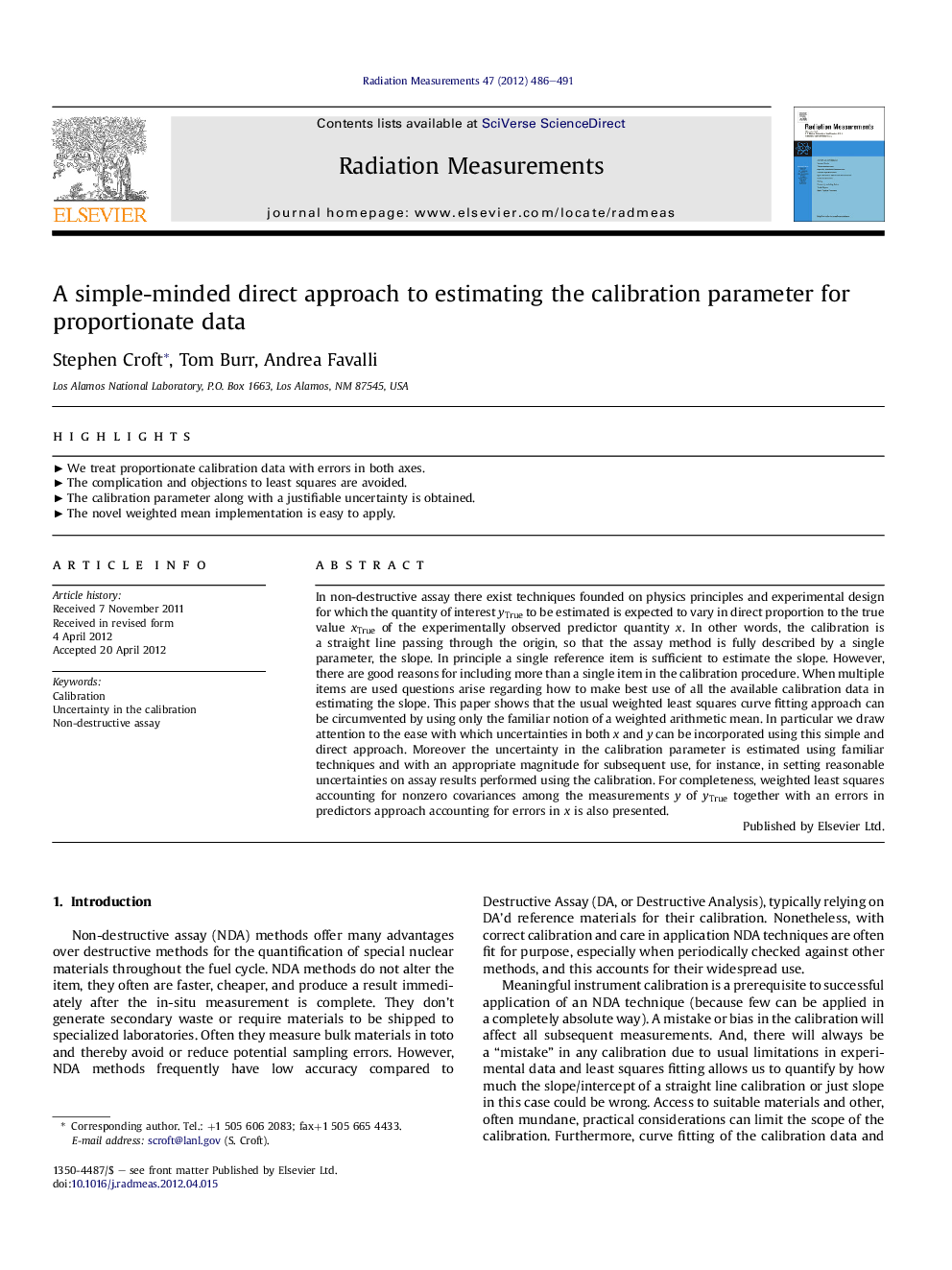| Article ID | Journal | Published Year | Pages | File Type |
|---|---|---|---|---|
| 1881487 | Radiation Measurements | 2012 | 6 Pages |
In non-destructive assay there exist techniques founded on physics principles and experimental design for which the quantity of interest yTrue to be estimated is expected to vary in direct proportion to the true value xTrue of the experimentally observed predictor quantity x. In other words, the calibration is a straight line passing through the origin, so that the assay method is fully described by a single parameter, the slope. In principle a single reference item is sufficient to estimate the slope. However, there are good reasons for including more than a single item in the calibration procedure. When multiple items are used questions arise regarding how to make best use of all the available calibration data in estimating the slope. This paper shows that the usual weighted least squares curve fitting approach can be circumvented by using only the familiar notion of a weighted arithmetic mean. In particular we draw attention to the ease with which uncertainties in both x and y can be incorporated using this simple and direct approach. Moreover the uncertainty in the calibration parameter is estimated using familiar techniques and with an appropriate magnitude for subsequent use, for instance, in setting reasonable uncertainties on assay results performed using the calibration. For completeness, weighted least squares accounting for nonzero covariances among the measurements y of yTrue together with an errors in predictors approach accounting for errors in x is also presented.
► We treat proportionate calibration data with errors in both axes. ► The complication and objections to least squares are avoided. ► The calibration parameter along with a justifiable uncertainty is obtained. ► The novel weighted mean implementation is easy to apply.
